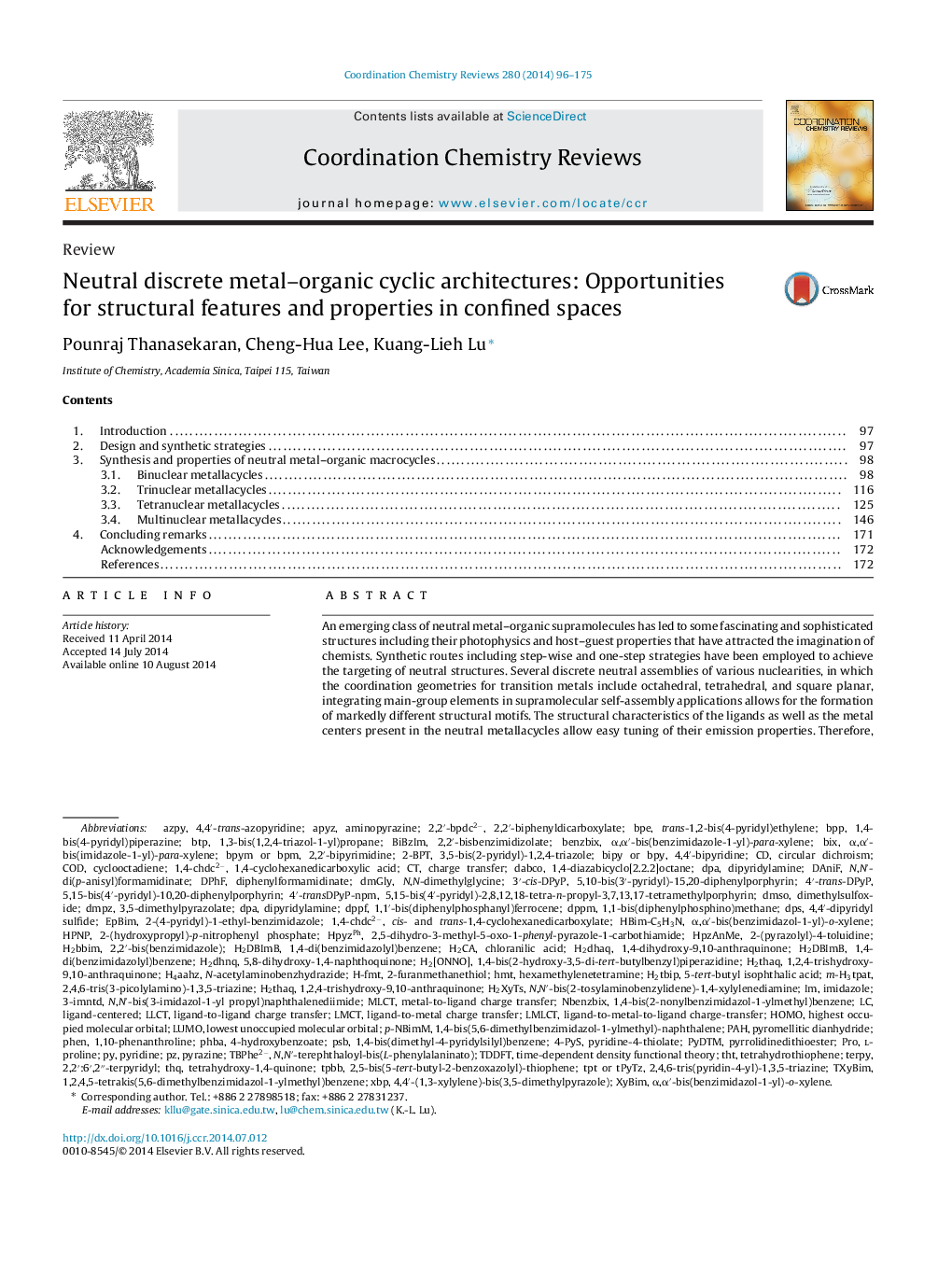| کد مقاله | کد نشریه | سال انتشار | مقاله انگلیسی | نسخه تمام متن |
|---|---|---|---|---|
| 1299401 | 1498737 | 2014 | 80 صفحه PDF | دانلود رایگان |
• Several approaches for producing metallacycles with well-defined shapes and sizes are highlighted.
• The state-of-the-art in neutral metal–organic cyclic architectures is summarized.
• Properties and potential applications of the metallacycles are discussed.
An emerging class of neutral metal–organic supramolecules has led to some fascinating and sophisticated structures including their photophysics and host–guest properties that have attracted the imagination of chemists. Synthetic routes including step-wise and one-step strategies have been employed to achieve the targeting of neutral structures. Several discrete neutral assemblies of various nuclearities, in which the coordination geometries for transition metals include octahedral, tetrahedral, and square planar, integrating main-group elements in supramolecular self-assembly applications allows for the formation of markedly different structural motifs. The structural characteristics of the ligands as well as the metal centers present in the neutral metallacycles allow easy tuning of their emission properties. Therefore, by engineering the different parts in neutral metal–organic ensembles, emissions from blue to red have been achieved. The neutral metallacyclic structures are unique in their well-defined forms and would be expected to function as a macrocycle host with a large internal cavity shapes generated by the tailored ligands. Hence, the presence of both photophysical properties and the cavity sizes of these neutral metallacycles make them intriguing hosts for neutral guests and metal ions. This review provides an overview of the structural features and properties of neutral discrete metal–organic cyclic architectures ranging from binuclear to fascinating multinuclear assemblies that emerged during the period from 2005 to 2012.
Figure optionsDownload high-quality image (103 K)Download as PowerPoint slide
Journal: Coordination Chemistry Reviews - Volume 280, 15 November 2014, Pages 96–175
